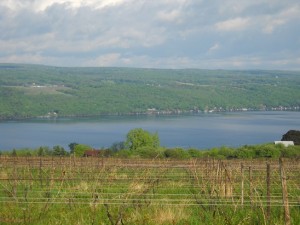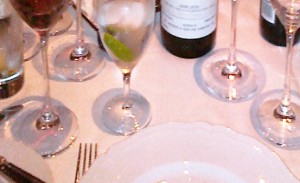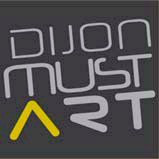May finds us busy as a bee with Spring in full swing and Mother’s Day just around the corner. And, in a few weeks, the official launch to the Summer 2010 season, Memorial Day Weekend, will be upon us.
On May 18, Tracy will begin her 5-week Italian wine class at NYU’s School of Continuing & Professional Studies (Register through NYU now). Then, on May 20, she’ll head up to Poughkeepsie to present on the Long Island wine region for the It Was a Good Year tasting group. Next, it’s back to the North Fork on May 21 for a class presented in partnership with the Town of Riverhead’s Department of Recreation.
Finally, we invite you to join us From Vine to Wine as we kick-off our public schedule with our first class scheduled for Saturday, May 29, 2010 at 11:00 AM and a second class set for Sunday, May 30, 2010 at 1:00 PM (Mad about Merlot).
On Thursday prior to the holiday, Hampton Jitney riders may find a Grand Cru Classes gift certificate at their seat, but you already have the inside track as a loyal reader of the Grand Cru Grapevine. Accordingly, we are pleased to extend the same offer to you – take 20% off a private event scheduled in 2010 or buy one ticket to a public class, get one free.
While you are waiting to head out to the Hamptons or the North Fork, you can sneak off to California’s Central Coast for a virtual visit of its vineyards with this month’s focus on “The Magic of Monterey.”
Drink wisely and well,
Tracy Ellen Kamens, Ed.D., DWS, CWE
CEO: Chief Education Officer
and
Jared Michael Skolnick
COO: Cork Opening Officer
———————————————
THE MAGIC of MONTEREY
Like many places in California, Monterey is a magical place. Known as the salad bowl of the U.S., the county is home to numerous farms and driving along the highway one is privy to signs announcing, “Now growing…lettuce (or some other produce)”.
We had the great pleasure of visiting Monterey in 2007 when we attended the SWE annual conference being held there. Arriving at San Jose airport (which is a much cheaper flight than flying directly to Monterey’s regional one), we picked up our rental car and got ready to hit the road south. To truly put us in the California spirit, we had splurged on a convertible and, as soon as we were settled into the car, the top came down. Our options included the interior highway U.S. 101 or the coastal U.S. 1 (aptly named the Pacific Coast Highway). We chose the latter and proceeded to drive accordingly. While in the San Jose vicinity, the thermometer in car read 89oF and the breeze felt great flowing through our hair. This was soon to change in a surprising way.
Upon reaching U.S. 1, we drove south toward our destination and watched the temperature drop precipitously. By the time we were at our destination, it was 65oF. Quite a difference! The drive itself is only about an hour, so what accounts for the vastly different climates? Mountains. And, not only mountains, but their orientation to the Pacific Ocean. The Central Valley of California is shielded from the cold Humboldt Current off the Pacific Ocean due to the (mountain range) that runs north-south or, in other words, parallel to the coast. These mountains insulate the interior from this cooling influence and keep the temperatures high. Conversely, the coast is open to the current and significantly alters the temperature.
Moreover, when you actually get to Monterey, there is a gap in the mountains where they begin to run east-west or perpendicular, rather than parallel, to the ocean. This mountainous orientation plays a big role in the Monterey wine region, with the warmer air at the south-western end of the valley creating a vacuum that pulls the cooler ocean air downstream. Accordingly, the area of Santa Lucia Highlands is hospitable to cool-climate grape varieties, namely Pinot Noir and Chardonnay, but also Riesling and Pinot Grigio. Temperatures range from 65oF-75oF with minimal temperature shifts and a long hang time-harvest is often as late as November. The warmer areas of southern Monterey and the Hames Valley are home to Cabernet Sauvignon and Rhone varietals respectively, which are able to ripen sufficiently given the higher temperatures found there.
Jerry Lohr of J. Lohr Vineyards noticed this unique terroir, particularly in the Arroyo Seco area, back in the 1970s and is among the pioneers in the region. More recently, others have recognized the potential and have established their own vineyards and wineries. Single-vineyard wines are particularly prized with a number of small, named vineyards earning stellar reputations. Gary’s, Talbott, [look up info]. Of course, wines from the wider Monterey County appellation are also produced and can be quite excellent as well. All in all, there are a wide range of microclimates, more than 55 varieties grown and ideal growing conditions to create balanced wines, resulting in true magic in a glass.
TASTING NOTES
Loredona Wine Cellars, Riesling 2007, Monterey, CA, $12.00
This wine shows lime, floral and peach blossom aromas. On the palate, it is slightly off-dry with vibrant acidity and flavors of peach, lime and floral notes, culminating in its long length. 10,000 cases produced.
Wente, Riva Ranch Chardonnay 2008, Arroyo Seco, CA, $20.00
In the 1930s, Wente was the first producer to label a wine as Chardonnay; today, Karl Wente is the fourth generation of his family to run the winery. This wine was barrel fermented and then aged for eight months in a combination of French, American, Eastern European and neutral oak. Aromas of spice, apple peel and a slight note of butter greet the nose. It is dry, with medium-full body and medium acidity. The palate offers up apple and well-integrated oak flavors of butterscotch, spice and an undercurrent of toothpick, finishing with long length.
Carmel Road, Pinot Noir 2007, Monterey County,CA, $16.50
This wine spent nine months in 98% French oak, 21% of which was new and 2% in American oak, 100% of which was new. Displaying raspberry, smoke and herbal aromas, this wine is dry with good acidity and low tannins. Notes of raspberry, cherry and smoke persist throughout its long length.
Lucienne Vineyards, Doctor’s Vineyard Pinot Noir 2007, Santa Lucia Highlands, CA, $35.00
Showing nice complexity, this wine has aromas of earth, herbal, raspberry and floral notes. Barrel aged for 14 months prior to bottling, its dry palate is very fruity with raspberry and herbal notes, coupled with an earthy undercurrent and balanced with bright acidity and long length.
Galante Red Rose Hill Vineyard Cabernet Sauvignon 2007, Carmel Valley, CA, $35.00
Jack Galante, owner and winemaker, is the grandson of the founding mayor of Carmel. Aromas of blackberry, slight oak and slight eucalyptus dominate the nose. The dry, full-bodied palate shows balanced acidity and ripe tannins with notes of blackberry, oak and smoke.



